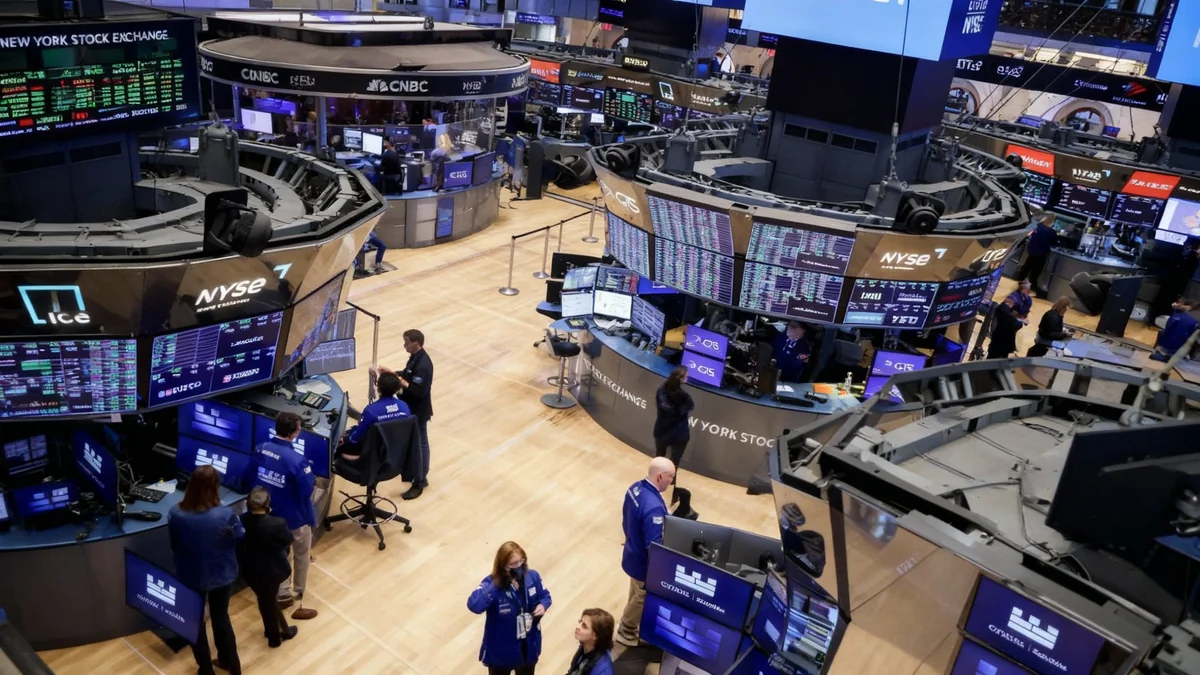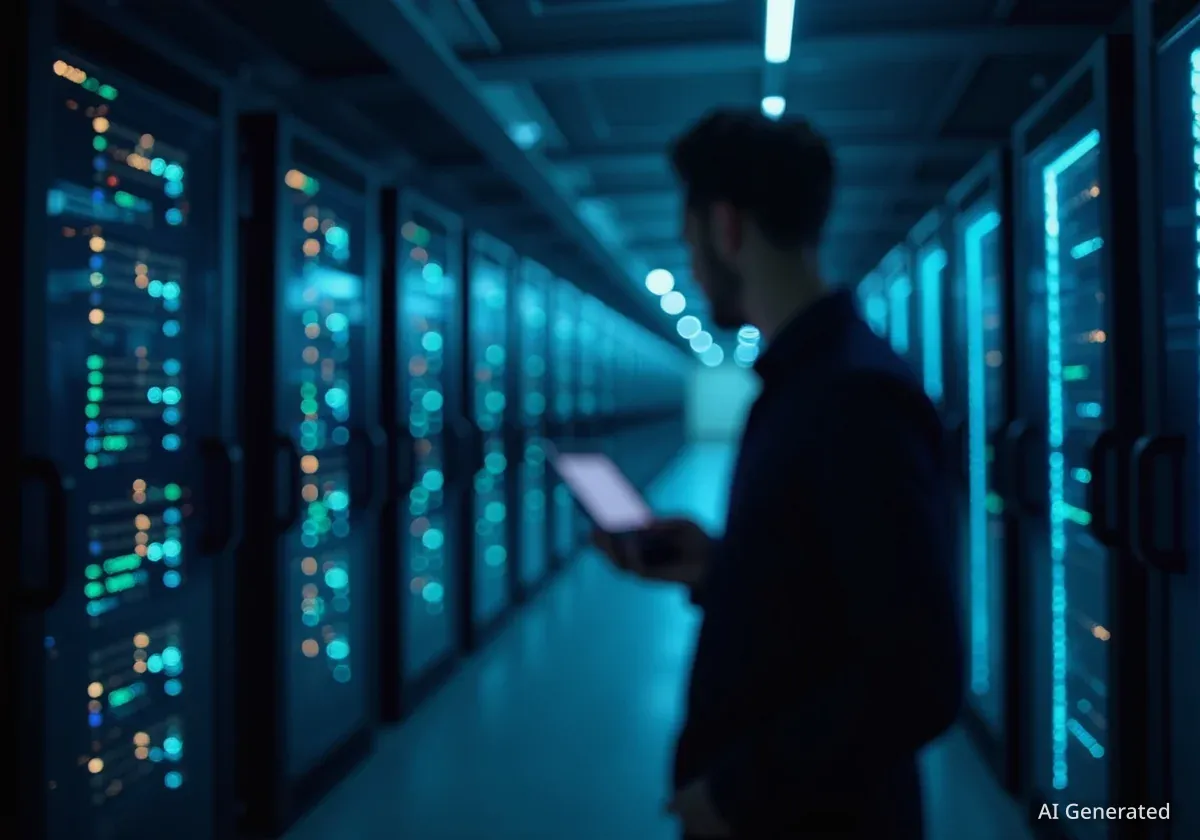A sudden wave of volatility in the stock market is raising new questions about the sustainability of the artificial intelligence stock boom. After a period of record-setting gains driven by tech and semiconductor companies, investors are now grappling with uncertainty surrounding the returns on massive, multi-billion dollar investments in the AI sector.
The recent market turbulence, which follows a strong recovery from April's downturn, has shifted focus to whether the valuations of leading AI firms have become overextended. The core of the issue lies in the immense capital being poured into AI development and infrastructure, with the timeline for a profitable return remaining a significant variable.
Key Takeaways
- Renewed market volatility is creating concerns about the high valuations of AI-related stocks.
- The massive rally in tech and chip company shares, which drove the market to new records, is now under scrutiny.
- Investors are questioning the long-term return on multi-billion dollar investments flowing between major AI players.
- The central debate is whether the rapid appreciation of these stocks has outpaced their fundamental value and future earnings potential.
The Foundation of the AI Rally
The first half of the year saw an extraordinary surge in stock values, largely propelled by companies at the forefront of the artificial intelligence revolution. This rally was not just a minor uptick; it was a powerful force that lifted the entire market out of a slump and pushed major indices to dozens of new highs. Companies involved in everything from chip manufacturing to cloud computing and software development saw their shares soar.
This growth was fueled by a widespread belief that AI represents a transformative technological shift, comparable to the advent of the internet. Investors, both institutional and retail, flocked to these stocks, creating what many analysts described as one of the market's most crowded trades. The narrative was simple: AI was the future, and investing in it was a direct path to growth.
Background: The Crowded Trade
A "crowded trade" occurs when a large number of investors buy into the same asset or group of assets, driving prices up significantly. While this can lead to substantial gains, it also increases risk. If sentiment shifts, the rush to sell can be just as intense as the initial rush to buy, leading to sharp price declines.
The momentum was self-perpetuating for months. Positive news about AI advancements or strong earnings reports from tech giants would send their stocks, and those of their suppliers, even higher. This created a positive feedback loop that made AI stocks seem almost invincible.
New Doubts Emerge
However, the recent return of market-wide volatility has introduced a new element of caution into the equation. The very investments that fueled the optimism are now a source of concern. Major technology companies are committing tens of billions of dollars to partnerships, infrastructure build-outs, and research and development. While these investments are crucial for innovation, they also represent a substantial drain on capital with no guaranteed immediate payoff.
Analysts are now asking tougher questions. Have these stocks run up too far, too fast? Is the current market price of these companies a realistic reflection of their future earnings, or is it based on hype and speculation? The fear is that the market has priced in a perfect execution of AI strategy, leaving little room for error or delay.
Investment on a Massive Scale
The scale of investment is staggering. Partnerships between major tech firms often involve commitments of billions of dollars. These funds are directed towards building massive data centers, acquiring specialized chips, and hiring top-tier talent, all of which are essential for developing and deploying advanced AI models.
The concern is not that AI will fail as a technology. The consensus remains that it will be transformative. Instead, the worry is centered on the financial returns for shareholders in the near to medium term. The path from technological breakthrough to widespread, profitable commercial application can be long and unpredictable.
Navigating the Uncertainty
The current market environment is characterized by a tug-of-war between long-term believers in the AI revolution and short-term traders concerned about valuation and volatility. The recent price swings suggest that the bears are gaining some ground, forcing a re-evaluation of risk across the sector.
Investors are now closely monitoring several key indicators:
- Corporate Earnings: Are companies successfully monetizing their AI investments and showing a clear path to profitability?
- Interest Rates: Higher interest rates make future earnings less valuable today, putting pressure on high-growth tech stocks with distant profit horizons.
- Regulatory Scrutiny: Governments worldwide are beginning to look more closely at AI, and potential regulations could impact the speed and cost of development.
- Market Sentiment: The shift from unbridled optimism to cautious evaluation is a significant factor in itself, potentially leading to lower valuations.
The coming months will be critical in determining whether the AI stock rally was a sustainable shift in market dynamics or a speculative bubble. The performance of these key stocks will not only shape the portfolios of countless investors but could also influence the direction of the broader market for the foreseeable future. While the long-term promise of AI remains intact, the short-term path for investors has suddenly become much less clear.





